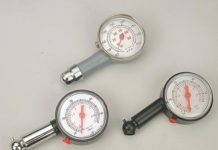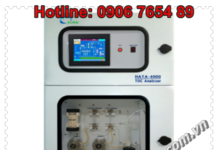Overview
This module is an ideal component for building boxcar averager systems. It includes a wide bandwidth variable gain AC/DC coupled input amplifier with offset adjustment and a high speed sampling gate with variable width and delay controls. It operates in normal or baseline sampling mode and features a switch-selected choice of how many samples are included in the averaging process. Separate outputs for the average and last sample taken are also provided. A gate monitor supplies a synchronized gate output pulse for application to an oscilloscope trigger or for referencing associated processing electronics. Trigger input is ECl or TTL or can be derived from the module's own adjustable trigger generator.
The module is packaged in a 2-unit wide NIM format and as such requires a suitable NIM rack and power supply to operate. The simplest single-channel system can therefore be produced with one model 4121 B module and a suitable NIM rack and power supply (such as the SIGIVAL RECOVERY model 4006 or 4001A14002D. The addition of a second model4121B and a model 4161A Display/ADC and control module provides a dual channel system with the added capability of allowing the transfer of output data to a computer for external analysis. Further modules can be added to increase the overall number of channels.
The unit can also be used with other SIGIVAL RECOVERY instruments, such as our lock-in amplifiers, to build systems capable of swept-gate waveform recovery experiments, all controlled via the Acquire data acquisition software.
- 1 ns minimum gate width
- 80 kHz max trigger rate
- Linear or Exponential averaging
- Input offset control
- Normal or Baselilne sampling modes
- Built-in trigger generator
- Pulsed laser experiments
- Phosphorescence decay time studies
- Precison signal sampling
Specifications
<>General
Single-channel gated integrator module mounted in NIM enclosure with adjustable sensitivity, offset, gatewidth and output averager. Manual controls.
Analog gate delay generator with manual or DC voltage control.
Measurement Modes
On receipt of an external trigger, the instrument waits for the preset gate delay and then integrates the voltage present at its input for the preset gate width. On completion a DC voltage representing this integral is provided at the Last Sample Output connector and in addition fed forward into an analog integrator state.
Single-channel gated integrator module mounted in NIM enclosure with adjustable sensitivity, offset, gatewidth and output averager. Manual controls.Analog gate delay generator with manual or DC voltage control.On receipt of an external trigger, the instrument waits for the preset gate delay and then integrates the voltage present at its input for the preset gate width. On completion a DC voltage representing this integral is provided at the Last Sample Output connector and in addition fed forward into an analog integrator state. Single-channel gated integrator module mounted in NIM enclosure with adjustable sensitivity, offset, gatewidth and output averager. Manual controls.Analog gate delay generator with manual or DC voltage control.On receipt of an external trigger, the instrument waits for the preset gate delay and then integrates the voltage present at its input for the preset gate width. On completion a DC voltage representing this integral is provided at the Last Sample Output connector and in addition fed forward into an analog integrator state. Single-channel gated integrator module mounted in NIM enclosure with adjustable sensitivity, offset, gatewidth and output averager. Manual controls.Analog gate delay generator with manual or DC voltage control.On receipt of an external trigger, the instrument waits for the preset gate delay and then integrates the voltage present at its input for the preset gate width. On completion a DC voltage representing this integral is provided at the Last Sample Output connector and in addition fed forward into an analog integrator state.
| Signal Channel | |
| Mode | Normal or Baseline Sampling |
| Sensitivity | ±20 mV to ±2 V in 1-2-5 sequence |
| Coupling | AC/DC |
| Impedance DC only DC or AC |
50 Ω // 10 pF 1 MΩ // 30 pF |
| Maximum Safe Input 50 Ω Input 1 MΩ Input |
±5 V ±100 V |
| Offset | ±10 x FA; non-removable |
| Overload Indicator | LED |
| Overload Level | Input (signal plus noise) > 1.1 x FS |
| Overload Recovery | Recovers after 1 sample for x 10 overload |
| Gain Drift | 0.5% /ºC, gate width > 30 ns; 1.0% /ºC, gate width <10 ns |
| DC Drift (referred to input) |
0.2%/ºC, gate width > 20 ns; 1.0%/º |
| Bandwidth 50 Ω input 1 MΩ DC input 1 MΩ AC input |
DC to 450 MHz DC to 100 MHz 1.5 Hz to 100 MHz |
| Signal Risetime 50 Ω input 1 MΩ input |
2 ns; 20% to 80% 10 ns; 20% to 80% from 50 Ω source. |
| Sampler and Timing | |
| Gate Width |
1 ns to 30 µs in 1-3-10 sequence, switch selectable with a continuously variable x1 to x5 multiplier |
| Sample Correlation |
Less than 0.5% of the sample output due to trigger t remains at trigger t + 1 |
| Gate delay Input Max delay |
0 to 10 V DC varies delay by 0.5% to 100% of range setting 3 ns to 200 ns in a 1-3-10 |
| Trigger Source | |
| Internal | 0.5 Hz to 40 kHZ selectable with range switches 0.5, 5, 50, 500, 5000 off. Vemier is 10x range. |
| External ECL TTL |
Positive edge, 5 ns min pulse width with termination of 50 Ω yo -2 V; -5 V to +10 V pk-pk safe input. Negative edge, 20 ns min pulse width; -5 V to +10 V safe input. |
| Max. Trigger Rate | 80 kHz |
| Trigger Indicator | LED lights when unit is triggered |
| Trigger Generator Output |
BNC TTL out on rear panel active in all trigger modes. Polarity set by bumper. |
| Frequency ranges | 0.5, 5, 50, 500 Hz, 5 kHz and off with vemier to overlap ranges. |
| Baseline Input | TTL line to indicate whether sample is signal or baseline value. |
| Analog Output Averager | |
| Mode | Linear or Exponential |
| Samples Averaged | 1, 3, 10, 30, 100, 300, 1k, 10k |
| LSO Droop Rate | < 0.2% FS/s |
| Averager Droop Rate | When there are no triggers the droop rate is <0.001% per minute for 10k samples. |
| Outputs | |
| Average Out | ±10 V FS with 50 Ω output impedance and capable of driving 2 kΩ load |
| Last Sample Out | ±10 V FS |
| Gate Monitor | 0.3 V into 50 Ω to ground. Marker pulse-width equals gate width. Position is within 5 ns from actual gate |
| Trigger | TTL |
| Baseline Output | TTL output line that toggles with each trigger to indicate whether next sample is signal or baseline value. |
| General | |
| Power Requirements | +24 V at 200 mA; -24 V at 150 mA +12 V at 300 mA; -12 V at 590 mA +6 V at 160 mA; -6 V at 630 mA |
| Dimensions | |
| Height Width Depth |
83/4 (222 mm) 23/4 (70 mm) 93/4 (248 mm) |
| Weight | 3 lb (1.4 kg) |





















Comments are closed.